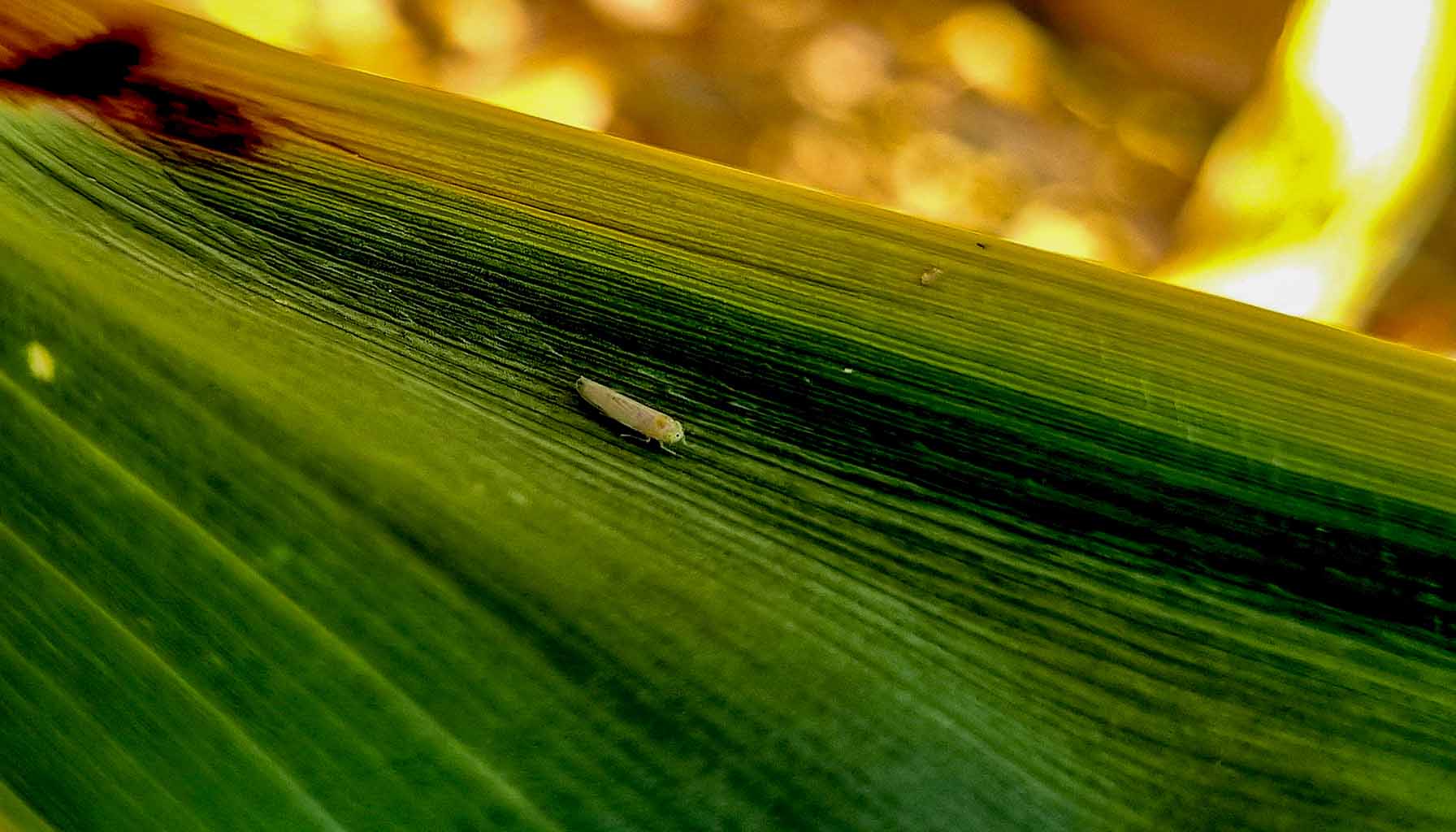University of Missouri Extension specialists have confirmed the first case of corn stunt disease in Missouri, marking a significant concern for corn producers in the region. The disease, which is transmitted by the corn leafhopper insect, was discovered in southwest Missouri.
Corn leafhopper, an insect capable of infecting corn with three pathogens, leads to the development of corn stunt disease. The initial symptoms of the disease include yellowing or reddening of leaf tips, followed by the growth of multiple small ears with loose or missing kernels, a reduction in plant size, and deformed grain. Substantial yield losses can occur in affected areas.
“Corn stunt is not a common disease and not one that we anticipated in Missouri in 2024,” said Mandy Bish, a plant pathologist with MU Extension. She also noted that corn stunt significantly reduced yields in Argentina’s corn crops in 2024.
MU Extension agronomist Tim Schnakenberg was recently alerted by farmers and agriculture professionals to symptoms resembling corn stunt in Christian, Stone, Lawrence, and Barton counties in southwest Missouri. The early symptoms observed included red and yellow discoloration of corn leaves and plants, along with premature drying from the top of the stalk downward.
“Corn leafhoppers were quite apparent in the field at the same time the leaf symptoms were observed. There is concern that many of the kernels from the affected plants may not make it into the combine grain tank due to low test weight,” Schnakenberg stated.
He and other agricultural professionals submitted field samples from the region to Peng Tian, director of the MU Extension Plant Diagnostic Clinic. Tian confirmed the disease using laboratory techniques such as polymerase chain reaction (PCR) and gene sequencing.
Infected plants may grow only to about 5 feet—approximately half their normal height. Leaves may appear shiny due to the honeydew excreted by leafhoppers as they feed. This honeydew can lead to black sooty mold, which impedes photosynthesis and negatively affects plant health. Since the pathogens are not fungi, fungicides are ineffective, according to Bish. Instead, management efforts will focus on controlling the insect population.
Corn leafhoppers are light tan or yellow and about 1/8 inch long, according to MU Extension state entomologist Ivair Valmorbida. A distinguishing characteristic of these leafhoppers is two dark spots located between the eyes of adult insects, visible with a 10X hand lens. Nymphs are green to tan in color and lack wings.
These insects move rapidly within and among cornfields, flying or jumping away when disturbed. They are typically found in shaded areas of corn, resting and feeding in the whorl of young plants, or hidden on the underside of leaves.
Corn leafhoppers impact corn health and yield by feeding on leaves, sucking plant sap, and transmitting pathogens that cause corn stunt. They reproduce only in corn and its relatives. Oklahoma State University reports that corn leafhopper has been associated with maize since its domestication around 9,000 years ago. Tian continues to collaborate with Oklahoma State University entomologists, who also confirmed the state’s first case of corn leafhoppers this season.
Corn leafhoppers move northward through wind-aided migration from Mexico, where corn is continuously produced year-round. Adult corn leafhoppers are known to overwinter in grasses such as wheat, alfalfa, Johnson grass, sorghum, sugar cane, soybean, millet, and gamma grass, but they reproduce only on corn.
It is commonly believed that these leafhoppers cannot survive Missouri winters. However, Valmorbida and Schnakenberg plan to continue monitoring for corn leafhopper presence in southwest Missouri throughout the winter.
Cultural control practices recommended to manage the disease include early planting, crop rotation, and controlling volunteer plants that could serve as overwintering sites for the insect.
Bish cautioned that other stresses could cause corn to turn yellow and red late in the season. She advises looking for additional signs, such as the presence of leafhoppers and honeydew.
The MU Plant Diagnostic Clinic offers diagnostic services for suspect samples for a small fee. Ideally, samples should include stalks and leaves. For more information, visit MU Plant Diagnostic Clinic.


